Have you ever wondered how some B2B marketplaces become massive successes?
B2B marketplace platforms are often a profitable marketplace business. Because all the transactions that are carried through the marketplace tend to be long-run and lucrative transactions.
So, How does one start a successful online B2B marketplace platform?
Here are the precise steps you need to follow to create a successful B2B marketplace for businesses.
You’ll learn even the tiny details about building an online B2B marketplace so that you’ll reap the rewards.
Key Takeaways on Online B2B Marketplace
- Building an online B2B marketplace means choosing a special area that matches what businesses need, so the platform can help them and bring in the right people.
- Picking a strong B2B marketplace platform that supports many sellers makes sure that buying and selling works smoothly, is fast, and can change with new market trends.
- A simple and easy-to-use design helps businesses by making it easy to find things, improving how customers use the site, and helping to get more sales with clear steps, especially on a B2B online marketplace.
- Adding important features like keeping track of stock, automatically handling orders, and safe payment options makes the B2B marketplace platform more trustworthy and helps buyers and sellers work better.
- For the marketplace to grow and be safe, it needs to use cloud storage, protect data with encryption, and follow rules to stay strong and secure, making it one of the best online B2B marketplaces.
- Using smart marketing like SEO, social media, and ads helps more people find the online B2B marketplace and brings in lots of buyers and sellers.
Build a Successful Online B2B Marketplace Platform Now!
What Is Online B2B Marketplace?
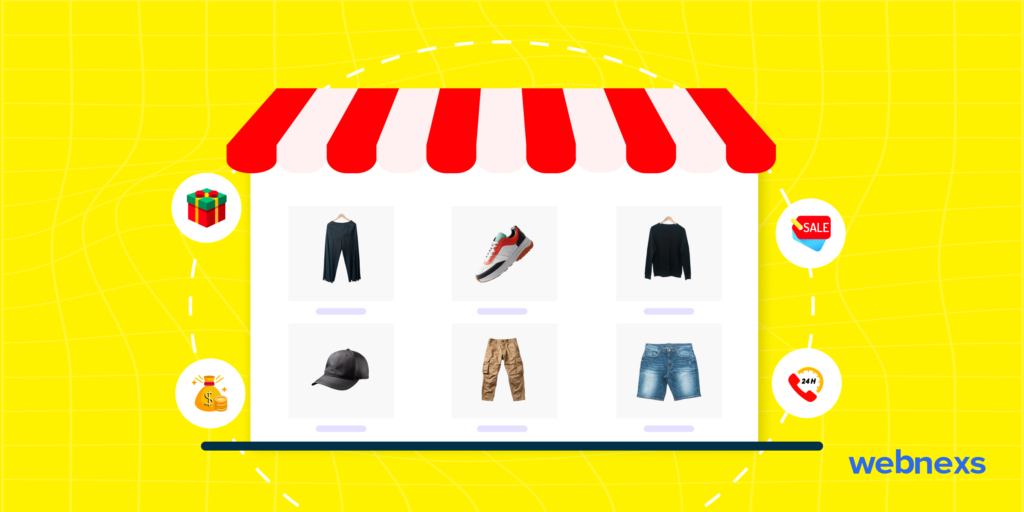
An online B2B marketplace is a digital platform where businesses buy and sell products or services to other businesses.
It facilitates transactions between businesses, offering a wide range of products, services, and suppliers. These marketplaces streamline procurement processes, foster collaboration, and expand business networks in a digital market.
The B2B ecommerce market was worth $18.66 trillion in 2023 and is expected to grow 18.2% every year until 2030
How To Build A B2B Marketplace Platform?
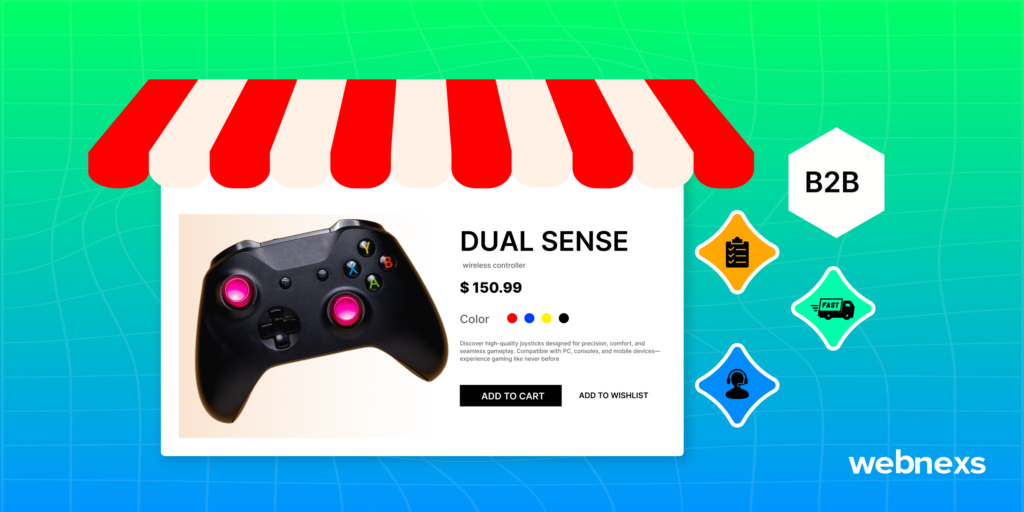
Set the record straight and we will talk about reality here!
It all starts with “I don’t know where to start?”
This is the level of awareness that is going to be discussed in this blog.
We are not going into the standard hierarchical steps that include technical jargon but I will break it down in simple terms for you!
You don’t need to have prior knowledge or refer to other blogs to get started.
Here’s the list of things you need to look for building a b2b marketplace platform.
- Reflect The Changes Needed
- Start With Thinking
- Do Your Research
- Draft A Customer Journey Map
- Website Development
- Sourcing Vendors
- Tracking KPIs and Monitoring Metrics
1. Start With Thinking

70% of B2B startups that planned their business well at the start worked better and grew faster over time
The idea of wanting to start a B2B ecommerce platform started with just a thought that originated from yourself.
Likewise, the type, size, and nature of the business, type of product or service, target audience, location, and other related market segmentation criteria need to be determined.
Yes of course you need to do market research to zero in on these but deciding on these factors without doing any groundwork will help you focus and narrow your approach. It acts as an outline.
2. Do Your Research
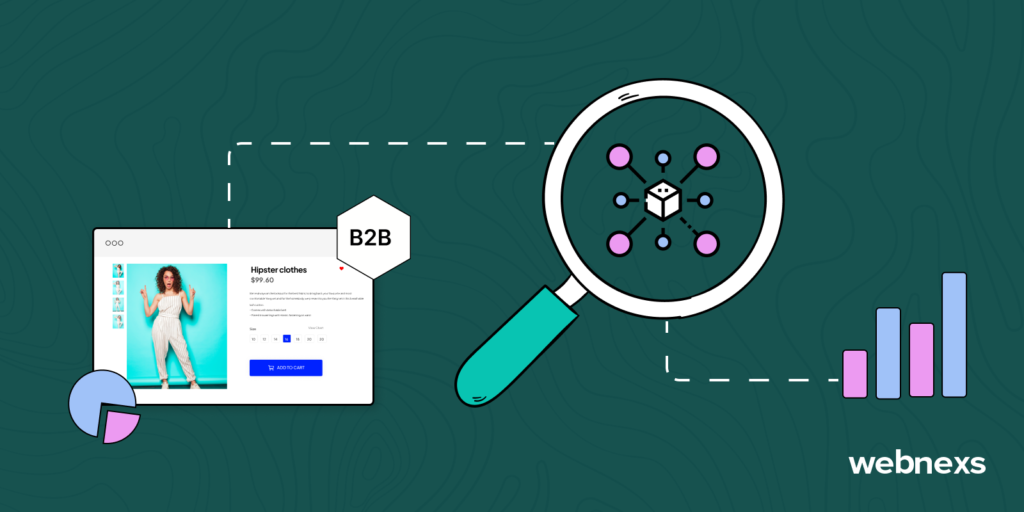
79% of B2B marketers believe that market research is important for understanding customer needs
The aforementioned point would have left you with a couple of questions, now to answer those you can start your own analysis by checking out credible sources that give real-world insights from which the potentiality associated with the industry can be determined and hence in each of the market segmentation elements. Final decisions must be based on these from credible sources.
Some of the credible resourceful links are mentioned below:
- Forrester Research
It gives insights on market trends and forecasts, customer experience insights, competitive analysis, industry-specific insights, and others.
- McKinsey & Company
It emphasizes the strategic implications of B2B ecommerce, including digital transformation and organizational change, often addressing long-term strategies.
- eMarketer
It primarily focuses on ecommerce, digital marketing, and media. It provides statistics in the form of infographics of the latest trends that are timely.
- Statista
It covers a wide array of industrial information, including ecommerce, that aggregates data from various sources, focusing on providing numerical data.
Doing this not only answers your questions like a one-time event but actually affirms your decision to enter into this industry by allowing you to see the future scope this industry has in terms of growth, providing enough validation for you to move forward.
3. Draft a Customer Journey Map

Now that we are settled with the initial ideation, now is the time to get into the action of materializing the idea.
You would think it would be to approach a software builder but before that, there is an imperative step that needs to be fulfilled.
The preparation of a customer journey map, which clearly outlines the experience your customer would have from the very first touchpoint to the last, imagining your B2B ecommerce platform is live.
Out of all the types, a service blueprint would be the most suitable due to the following reasons:
Complex Operations
Since B2B transactions involve complexity with various stakeholders, approvals, and custom requirements, this type of map assists in visualizing the entire process. It enables the identification of potential bottlenecks, and improvements can be made accordingly.
Multiple Touchpoints
This blueprint maps out the various touch points which include the various departments and personnel within a company. This facilitates a consistent and seamless experience across the entire organization by displaying a wider view that helps make decisions with a comprehensive understanding.
Internal Processes
It highlights the processes, allowing areas that need improvement and those that cause issues from initial contact to order fulfillment to be addressed proactively, enhancing overall efficiency as a result.
4. Website Development
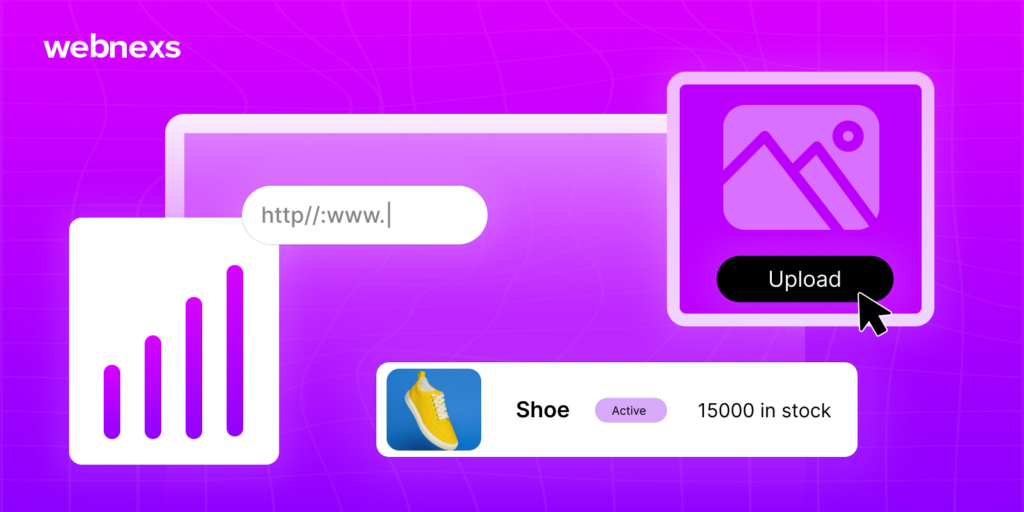
78% of customers want a smooth and consistent experience everywhere, which is why modern methods like composable commerce are important
There are various traditional and modern approaches to the design language architecture and the functionality of the software platform. Based on need the approaches must be determined.
The following traditional approaches are currently being deployed in the B2B ecommerce landscape till date:
- Layered (N-Tier) Architecture
- Client-Server Architecture
- Service-Oriented Architecture (SOA)
- Three-Tier Architecture
- Object-Oriented Architecture
Some of the modern approaches wireless used currently are:
- Headless Architecture
- Microservices
- Composable Commerce
- API-First
- Cloud-Native
- Event-Driven Architecture
How modern approaches have an edge over traditional approaches:
Customer Expectations
Modern customers expect modern solutions in terms of agility and flexibility in every touchpoint they come across in their shopping experience, to suffice that, adopting a modern approach would be ideal to deliver a consistent and adaptable experience. To know about the customer expectations start to attract the customers first.
Scalability Requirements
All modern approaches are built on flexibility to integrate, upscale, and downscale as and when required, this becomes a primary concern as the market demands are always fluctuating and the need for an agile and responsive system becomes a necessity.
Integration Abilities
Modern approaches are well-versed in their ability to integrate into legacy systems and third-party services. Practically speaking, utilizing an ecosystem of technological products is over the cloud. So this approach enables extensibility to your newly procured B2B ecommerce software.
Decoupled Architecture
This approach helps in allowing flexibility in customization and scalability by enabling components to interact freely and upgrade services independently, without touching the rest of the components within the system, thus promoting holistic change management that happens with no barriers for each service to operate constantly. Webnexs offers an API-driven headless ecommerce solution, which is a solution that facilitates faster time to market and future-proofs your website.
5. Sourcing Vendors
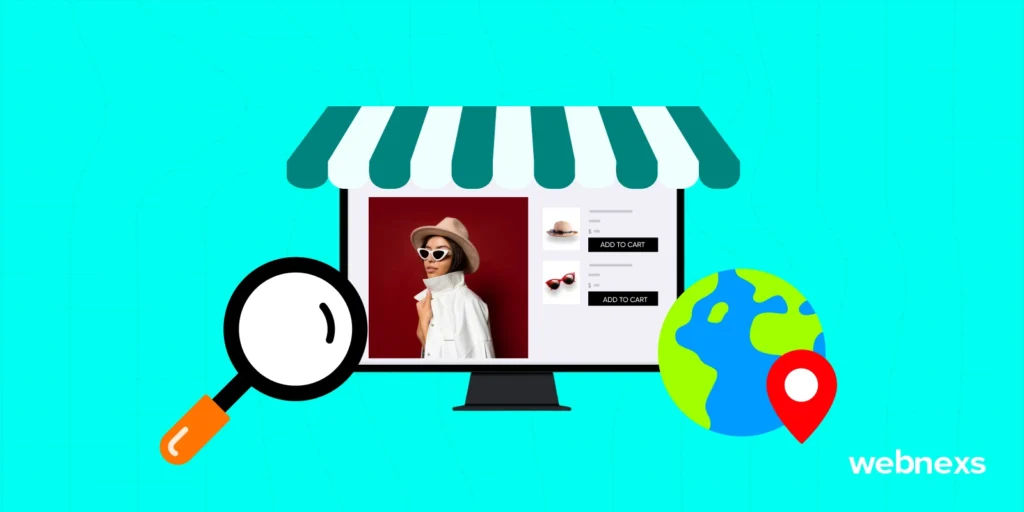
74% of B2B businesses rely on online marketplaces for vendor sourcing
Nothing like the right source that comes from networking, additionally there are dozens of sources to pick the right vendors. Let me break it into real practical steps, theory is not going to help you now!
- Online Marketplaces: ThomasNet
- B2B Directories: Kompass and Maker’s Row
- Industry Associations: The American Apparel & Footwear Association (AAFA) and The National Association of Wholesaler-Distributors (NAWD)
- Wholesale and Distribution Networks: Doba and Wholesale Central
- Online communities: LinkedIn, Facebook Groups and Reddit
- Others: SourcingBox and TradeGecko
These are some easy steps for sourcing in the initial phases. Once you start growing, vendors will begin making unsolicited requests to sell on your platform. Find ways to entice the marketplace sellers.
6. Tracking KPIs and Monitoring Metrics
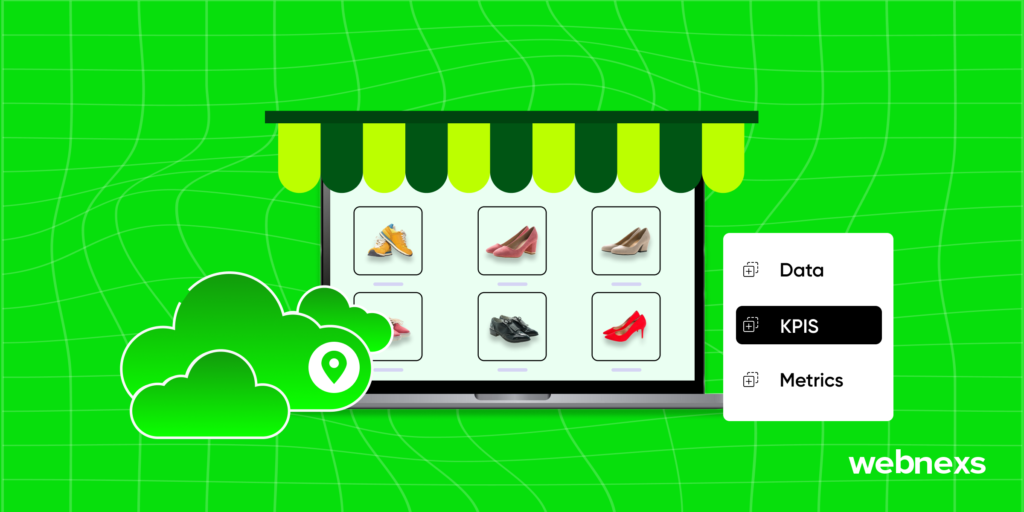
Businesses that consistently track and analyze key performance indicators (KPIs) are 50% more likely to see improved performance and long-term growth
Are you thinking that both are the same?
Okay, the misconception still exists. They are not the same.
Both measure performance, but KPIs are strategic tools derived from business goals to assess long-term performance, while metrics are operational tools that measure performance over a short period.
KPIs (Key Performance Indicators)
- Gross Merchandise Value (GMV): It measures the value of sales of all the merchandise sold.
- Average Order Value (AOV): It indicates the average amount spent per order by a buyer.
- Conversion Rate: It measures the percentage of visitors who make a purchase compared to the total number of visitors to the website.
- Customer Lifetime Value (CLV): It is an estimate of the total revenue that could be generated from a single buyer throughout their predicted time of business with the seller.
- Customer Acquisition Cost (CAC): It indicates the cost of acquiring a new buyer.
- Churn Rate: It measures the percentage of buyers who stop their purchase from the seller.
- Order Fulfillment Rate: It indicates the percentage of orders shipped on time and in full.
- Net Promoter Score (NPS): It indicates customer satisfaction and loyalty.
Metrics
- Traffic Sources: It displays website traffic by source (organic, paid, referral, etc.)
- Bounce Rate: It measures the percentage of visitors who leave after viewing only one page.
- Return Rate: It indicates the percentage of products returned by customers.
- Sales Growth Rate: It measures the percentage increase in sales over a specific period.
- Inventory Turnover Ratio: It indicates the rate at which inventory is sold and replenished.
- Email Open and Click-Through Rates: It measure the engagement with email marketing campaigns.
- Profit Margin: It represents the percentage of revenue that exceeds the costs of goods sold.
7. Reflect The Changes Needed

Companies that use data to make improvements to their platform see 60% more happy and loyal customers
From the insights that you have gathered from the KPIs and metrics, it’s now time to make modifications to the areas needed to ensure you are improving to build a robot platform that facilitates operations for the vendors as well as the buyers.
Build a Successful Online B2B Marketplace Platform Now!
How Does Online B2B Marketplace Work?
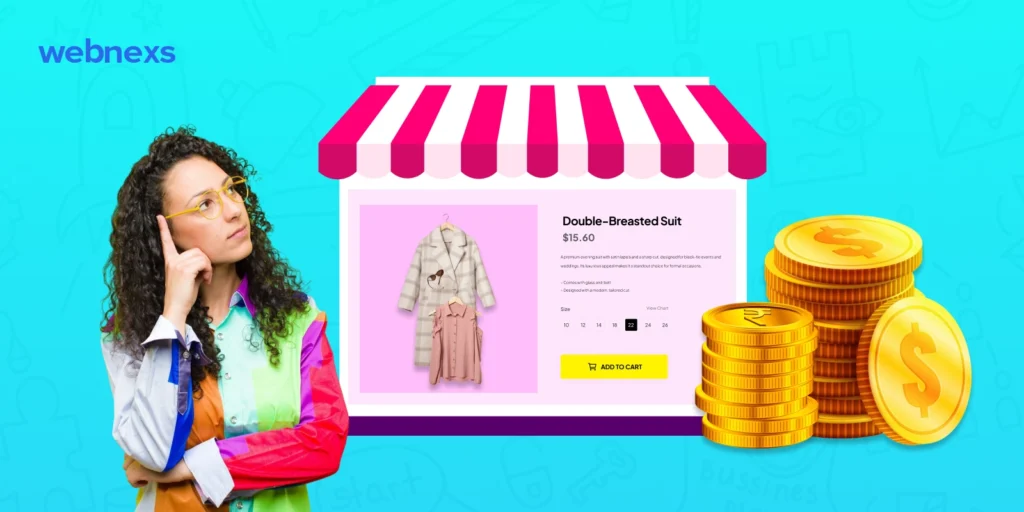
85% of B2B companies report that using online marketplaces has helped them improve their purchasing efficiency and discover new suppliers
B2B marketplaces help businesses buy and sell things to each other. Here’s how it works:
1. Registration
Both buyers and sellers need to sign up on the marketplace. They just need to give simple information like the business name, address, and contact details.
2. Profile Creation
After signing up, buyers and sellers can make their profiles. The profile shows things like what products the business sells, the prices, and other important details.
3. Product Listing
Sellers put their products and services on the marketplace. They add details like price, features, and what the product does. Buyers can look through the list and compare different products.
4. Search
B2B marketplaces have smart search tools that help buyers find the products and services they need fast. Buyers can search using filters like product type, price, location, and more.
5. Purchase
When a buyer finds the product they want, they can add it to their cart and proceed to checkout. B2B marketplaces usually offer different payment options like credit cards, bank transfers, and online payment methods.
6. Delivery
After the payment is made, the seller ships the product to the buyer. B2B marketplaces often work with delivery partners to ensure the product arrives on time and provide tracking details.
7. Feedback
After the transaction, both buyers and sellers can leave reviews on the platform. This feedback helps others see the quality of products and services offered by different businesses.
What are the 4 Important Things Need to Create an Online B2B Marketplace Website?
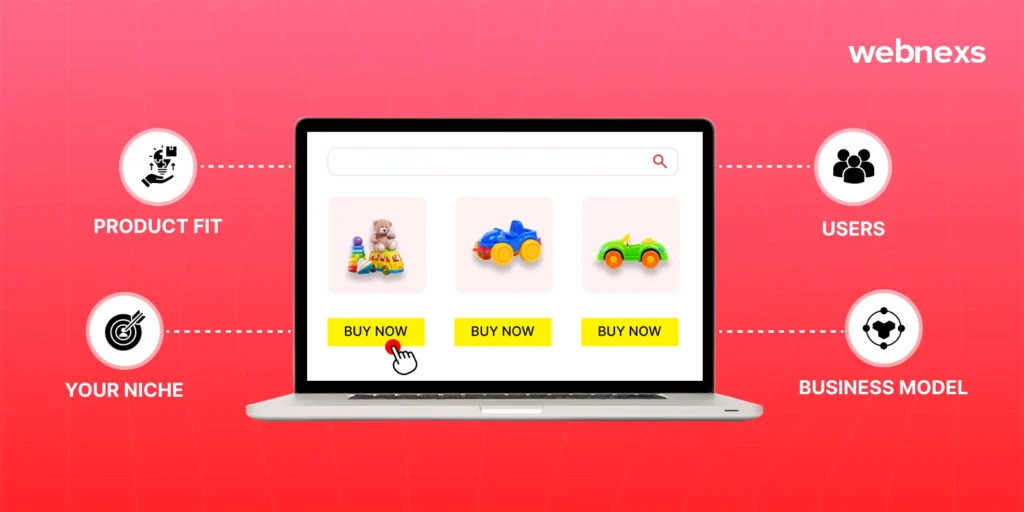
There are a couple of things that are needed to create B2B marketplace online business.
Here are the foremost vital elements you would like to keep in mind.
1. Your Niche
Your B2B marketplace business needs a distinct segment.
Why?
Because that’s the only way your marketplace platform can stand out.
Think about it: If you’re trying to seek the audience’s attention with a general ecommerce B2B marketplace.
What would be the outcome?
It probably won’t get much attention.
Why because there are well-known marketplaces like Alibaba out there that work similarly.
Those are marketplaces people address for their more general needs.
56% of B2B buyers say they prefer dealing with specialists who have deep expertise in their specific industry
But if your marketplace features a niche product of yours, then surely your marketplace will hit the online market soon because of the “go-to” source for that niche.
For instance,
You would possibly be the marketplace for businesses that require seeking out quality jewelry or a marketplace for the most straightforward business travel services.
To figure out your niche, check out the industry you would like to work in.
- What’s already out there?
- How are you able to offer a far better marketplace?
- Does one offer better quality or make B2B transactions more convenient or cheaper?
Also read: 3 Ways to Pick Marketplace Niche
2. Product/Market Fit
Any business, including yours, will work only if there’s a product/market fit.
What does this mean?
Simple: There must be a market that’s hungry for your B2B platform.
Usually, you’ll get to iterate to seek out that fit. You recognize people want your platform once they start signing up and paying for it. On the other hand, if they don’t see the worth of your platform, you would like to tweak it to seek out a far better product/market fit.
According to Forrester Research, only 36% of B2B businesses achieve a perfect product-market fit within the first two years of launching.
3. Business Model
Your next step is to work out what business model you would like to use. After all, your business model is one of the foremost essential elements of your business.
With the proper business model, you’ll scale and build a profitable business. With the incorrect model, you’ll be stuck in growing a company that’s doomed from the beginning.
The best way to price your business?
It’s probably a commission model, where you get a slice of each transaction that’s made on your platform.
Alternatively, if you’ve got fewer but bigger transactions, you would consider pricing per every lead you help your users get.
According to a study by McKinsey, 72% of B2B platforms use commission-based pricing where they take a slice of each transaction made on their platform
4. Users
Finally, believe who your users are.
- Are they small businesses?
- Mid-sized businesses or enterprise businesses?
- Or are you offering services to different types of companies?
Be clear on that first:
- What motivates your users to use your platform is that an enterprise business has different needs and budgets than a little, one-man business.
- How to attract them to your platform – You would possibly be ready to get smaller businesses by advertising on social media. Bigger companies have bigger competition, so they usually require more in-person marketing efforts.
- What price index your marketplace should have – After all, it’d be easier to draw in smaller businesses to your platform. But they won’t be ready to spend like enterprise businesses.
A recent survey found that 56% of B2B buyers prefer platforms that cater to their business size and needs
How To Find The Proper Online B2B Marketplace Software?

Once you’ve got your B2B marketplace platform fundamentals, it’s time to create b2b marketplace.
The easiest way?
You’ll develop your platform from scratch.
However, the fastest and most cost-effective way is to use B2B marketplace software.
These are SaaS tools with drag-and-drop features that you can use to line up your online B2B platform each day. If you would like more advanced features, you’ll usually customize your platform.
Your B2B marketplace builder must include the subsequent.
1. The Features
These should include a minimum of essential items like listings, user profiles, payment methods, and how users can speak with one another.
2. Security
Anything will start with trust and security factors. They are essential for a marketplace business, so your B2B marketplace software must have proper security measures. For instance, it must offer secure transactions and communication methods.
3. Customizability
If you want to be treated better than your peers, you must offer something unique in customizing your platform.
At Webnexs, we provide a B2B marketplace builder. Our interface is straightforward to use, but you get access to tons of powerful features.
Build a Successful Online B2B Marketplace Platform Now!
Key Market Trends that Shape the Online B2B Marketplaces

Online B2B marketplace seems to experience a rapid growth and transformation. With the increase in the number of businesses converting to digital platforms, they are becoming more aware of the latest market trends.
One major shift we notice is the move towards better user experiences. Businesses have realized that a smooth and seamless platform makes all the differences.
AI and machine learning is one of the key changes in how we do businesses. These technologies help b2b platforms to improve product recommendations, process automation, and also to provide faster customer service.
Payment systems are also getting smarter. To reach a global level of audience, payment integration is important. Multiple payment options with cross-border transactions is a smarter move.
The rise of social commerce is also something you need to notice. More B2B buyers are using social media to buy products. If you are not using social media, it means you are losing a lot of traffic and revenue to B2B marketplace platforms.
Atlast, sustainability is also an important trend to notice in B2B marketplaces. Start to focus on including sustainable suppliers and adoption of eco-friendly practices to meet increase in demand for sustainable products.
Top 8 Benefits of B2B Marketplace Platform

1. Cost Reduction
“Lowering operational costs is crucial for profitability.“
B2B ecommerce helps businesses reduce costs by eliminating the need for physical storefronts, minimizing overhead expenses, and streamlining processes.
Automation and digital transactions reduce manual labor and errors, allowing companies to operate more efficiently.
By cutting costs, businesses can increase their profit margins and allocate resources to other areas, such as product development or marketing.
Using B2B ecommerce can save 20% on costs by automating work and needing less manual effort
2. Increased Reach
“Expanding market reach is vital for growth and revenue diversification.“
B2B ecommerce allows businesses to reach a global audience without the limitations of geographical boundaries.
This expansion opens up new markets and customer segments, increasing the potential for sales and diversifying revenue streams.
Businesses can connect with suppliers, distributors, and customers worldwide, leading to greater opportunities for growth.
In 2021, B2B e-commerce sales in the U.S. were $1.7 trillion, and they are expected to grow by 12.7% every year in the USA alone
3. Improved Efficiency
“Streamlining operations through automation directly impacts productivity.“
Ecommerce platforms automate various business processes, such as order management, inventory tracking, and customer relationship management.
This automation reduces the time spent on manual tasks and minimizes errors, enabling employees to focus on more strategic initiatives.
Improved efficiency leads to faster turnaround times and better service delivery, enhancing overall business performance.
65% of B2B companies provide all-digital services, making their work faster and easier
4. Better Customer Experience
“Enhancing customer satisfaction can lead to repeat business and loyalty.“
A positive customer experience is essential for retaining clients and encouraging repeat purchases.
B2B ecommerce platforms can offer personalized experiences, such as tailored product recommendations, flexible payment options, and efficient customer service.
Satisfied customers are more likely to return, resulting in increased sales and long-term relationships.
One-third of B2B buyers want better customer service, so businesses are improving their online platforms
5. Improved Customer Trust
“Customer trust is more important for long-term business.”
An online b2b marketplace which offers secure and transparent transactions builds trust with the customers and reassures them.
Platform’s reputation management system, includes customer reviews, ratings, and verified seller profiles.
Implementation of secure payment gateways, protects the sensitive financial data properly.
Trust becomes a major part for repeat business.
88% of online shoppers are less likely to trust websites that don’t have security features like encryption
6. Payment Processing
“Efficient payment processing improves your business operations.”
Seamless payment processing in an online b2b marketplace minimizes the friction between buyers and sellers.
The platform integrates secure payment gateways like credit cards, bank transfers, and digital wallets.
Automation tools helps to manage repeated bills, and reduce administrative overhead with timely payments.
Most of the B2B marketplaces support multi-currency and break the language barriers.
It speeds up the cash flow with fast and reliable payment processes.
82% of B2B buyers prefer online payments, with many choosing digital options for faster processing
7. Ease of Use
“Simplified user experience drives higher engagement and satisfaction.”
The marketplace has easy search options and simple menus.
Users can find what they need quickly. It helps automatically with things like ordering and tracking products.
The platform works on phones so business owners and managers can use it anytime and anywhere.
72% of customers say ease of use is the most important factor when shopping online
8. Enhanced Security
“Secure digital transactions are crucial to maintain business integrity.”
In an online B2B marketplace it is very important to keep business information safe and private.
The platform uses special codes like SSL/TLS to protect the data when it is sent. It also asks for extra steps like a password and a code, so that only the right people can get in.
The platform conducts regular security audits to stay safe from online dangers.
It also follows important rules like GDPR and PCI DSS to be proper legally.
59% of B2B companies say cybersecurity is a top priority when improving their digital platforms
Top B2B Online Marketplace Companies Examples
1. Alibaba – Best B2B Marketplace Software

Alibaba has 30% of China’s B2B market and is growing in India, Europe, and the U.S.
Alibaba is one of the largest global B2B ecommerce platforms that originated in China, connecting manufacturers, wholesalers, and buyers from around the world. It serves businesses looking for bulk purchasing and product sourcing. With over 40 million active global users and around 400,000 daily product inquiries, it is one of the largest online B2B marketplaces. It caters to both small business owners and mass wholesalers. Moreover, it caters to a wide range of categories ranging from medical devices to the least bought household items.
Competitive Analysis Overview
- Strengths – It boasts a diverse network of manufacturers, wholesalers, and buyers. It has a comprehensive product selection and a large number of verified suppliers.
- Market Share – As one of the pioneers in B2B ecommerce, Alibaba holds a substantial share of the global market, with a dominant presence in China and significant reach across Asia, Europe, and North America.
- Unique Aspects – Alibaba offers trade assurance, which provides buyers with secure transactions, and a range of tools like supplier verification, RFQ (Request for Quotation), and customized sourcing solutions.
2. Amazon Business – Best B2B Marketplace Platform
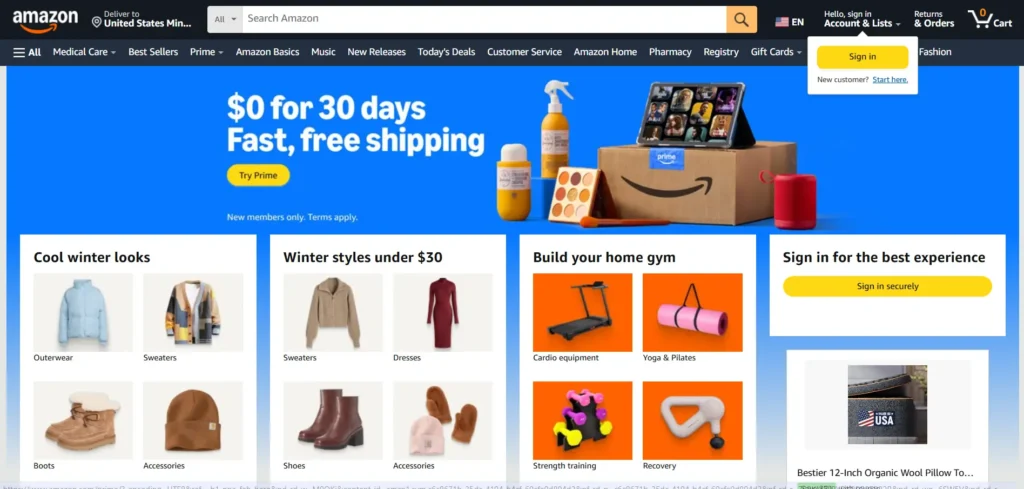
Amazon Business is expected to make $70 billion in sales by 2025
It is the B2B arm of Amazon, offering businesses an extensive range of products with features like bulk discounts, procurement tools, and invoicing that primarily dominate the US market. It reached an annualized gross sales of 35 billion dollars in 2023. It has over 6 million customers, including 96 of the Fortune 100 companies. Their product catalog spans millions of items, and the platform supports over 300 million active customer accounts globally.
Competitive Analysis Overview
- Strengths – It leverages Amazon’s robust infrastructure and vast product assortment to provide an end-to-end B2B procurement solution. It offers features such as bulk pricing, procurement workflows, and integration with third-party procurement systems.
- Market Share – Amazon Business is rapidly gaining market share in North America and Europe, benefiting from Amazon’s brand recognition and established logistics network.
- Unique Aspects – The platform’s integration with Amazon’s extensive delivery capabilities, coupled with business-specific features such as purchase analytics and multi-user accounts, makes it a popular choice for B2B buyers.
3. ThomasNet – Top Online B2B Software Marketplace
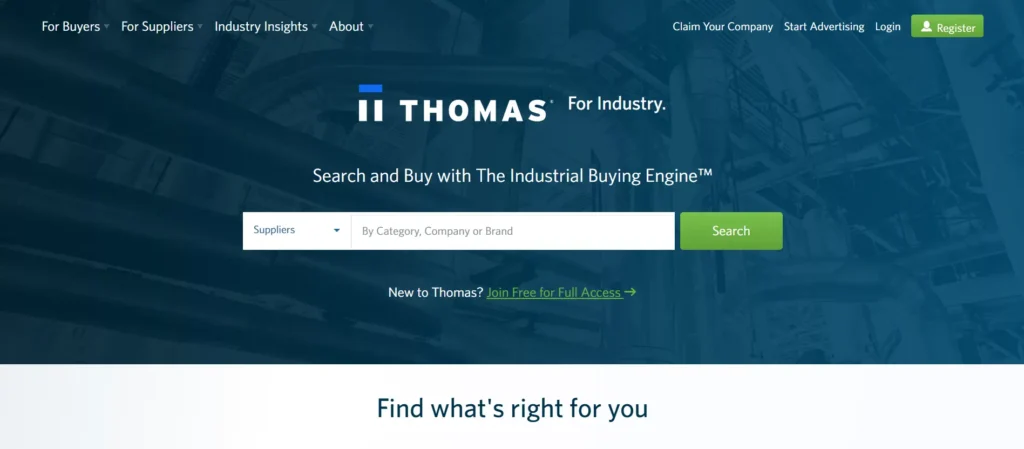
ThomasNet has over 1.3 million active users, growing by 10,000 new subscribers every month
ThomasNet is a well-known industrial B2B marketplace that connects manufacturers and suppliers in North America. It focuses on providing sourcing solutions for industrial products and components. It currently has over 1.3 million active users and is growing at the rate of gaining 10,000 new subscribers every month. Every two seconds these industrial buyers, engineers, and MROs source new suppliers and products from 70,000 categories containing 500,000 North American manufacturers and 7.8M product listings – and growing.
Competitive Analysis Overview
- Strengths – ThomasNet focuses on industrial products and services, providing an extensive supplier directory for engineers, procurement professionals, and manufacturers.
- Market Share – It holds a leading position in the North American industrial B2B market, with a focus on providing sourcing solutions for the manufacturing sector.
- Unique Aspects – Its in-depth product catalogs, engineering specifications, and industry-specific search capabilities make it unique among B2B platforms that serve the industrial sector.
Build Your Own Online B2B Marketplace Today!
How To Grow Your B2B With Marketplace Builder?
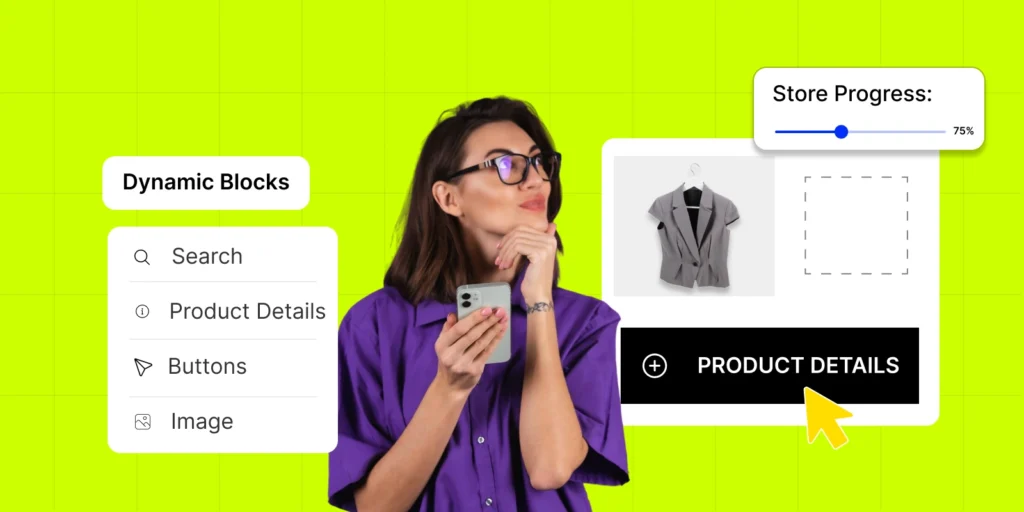
Once you’ve created your B2B marketplace, it’s time to grow and scale it.
When you first start growing your B2B marketplace, you should first specialize in getting users organically. It is often especially the case if you’re working with more prominent companies.
In the beginning, you’ll get to overcome the classic “chicken or egg” problem.
What does this mean?
A marketplace needs both sellers and buyers, but it’s not always clear which user group you ought to prioritize.
A good approach is first to get a variety of sellers to your marketplace. They need an incentive to hitch, and once you show that your marketplace has something to supply, you’ll grow it with buyers.
To get your first users (both sellers and buyers), you could possibly try:
- Tapping into your network.
- Cold emailing and cold calling.
- Attending the conferences, sector events, and any trade show of your niche
- Partnering with companies that aren’t direct competitors.
But what does one do once you’ve got a variety of sellers and buyers on your B2B ecommerce platform? You can start scaling it.
Now, you employ more scalable marketing methods to draw in users. You continue that specialize in the strategies you’ve used previously to draw in users, but now, you begin adding strategies that attract even more people to your site.
These include strategies like:
- Search engine optimization – Get your users to seek out your marketplace on search engines.
- Content marketing – Together with your blog content, you build an audience of loyal fans who see your brand as the leading expert in your niche.
- Guest posting – Guest posting helps you grow your audience base and build more self-brand awareness by getting your company featured in publications.
- Social media marketing – Counting on the companies you target, social media marketing could be how for you to draw in new users. You’ll use platforms like LinkedIn and Facebook to urge users to your marketplace.
Want To Start Out Building Your Online B2B Marketplace Today?
There you’ve got it. Now you recognize the way to create a B2B marketplace platform. It comes right down to finding the proper niche, market fit, business model, and user base.
Once you’ve got your basics nailed down, it’s time to start out building your B2B marketplace. For that, you would like the proper marketplace software.
Webnexs: Right Solution to Build Best Online B2B Marketplace
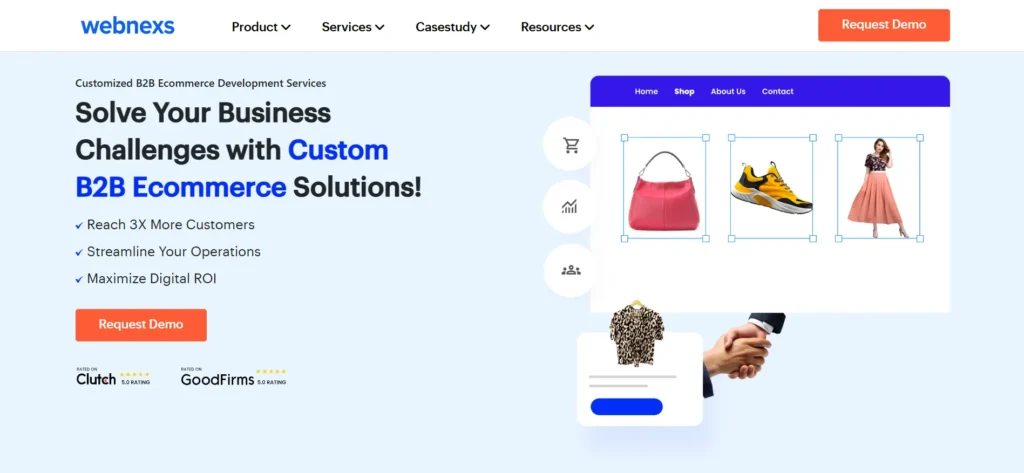
To build a successful online B2B marketplace you need a strong team that knows what they’re doing and can be trusted. Webnexs offers smart solutions to build online marketplaces that grow with your business. We understand both technology and the market, so that we make platforms that are safe, easy to use, and can be changed as needed.
Webnexs has a proven track record of helping businesses build successful marketplaces. You can explore the experiences of our satisfied clients and learn more about our success stories on our dedicated page. We always improve and add new things to make sure your platform stays strong and trusted. We focus on keeping everything secure, able to grow, and providing help whenever you need it, making them a great partner for your B2B marketplace.
So, by the way, your B2B online marketplace platform will have all the powerful features to need to grow fast as much as you can.
Want to undertake Webnexs for free B2B marketplace consultation? Click here!





1 Responses
Very informative post! This post gives truly quality information. I find that this post is really amazing. Thank you for this brief explanation and very nice information.